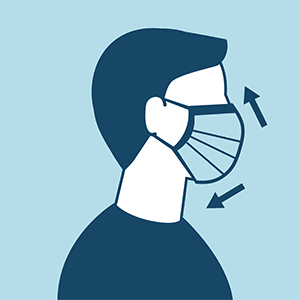#15,323
Even as fewer and fewer Americans seem to be wearing face covers in public, other countries are doubling down on their use in hopes of preventing a second wave of the COVID-19 pandemic.
Starting today - June 15th - the wearing of a face cover will become mandatory when riding on public transportation in England, and strongly encouraged in other parts of the UK.There are exceptions, such as for children under the age of 11 or those with breathing difficulties, but it should apply to most adults. Details on the plan can be read on the UK Govt. website at:
Face coverings to become mandatory on public transport
From 15 June, face coverings will be required while using public transport in England.
According to the BBC, starting today face covers will also be mandatory for Uber drivers and their passengers.
- government asks transport operators in England to make wearing face coverings a requirement of using public transport from 15 June to coincide with the next stage of carefully easing restrictions
- bus, coach, train, tram, ferry and aircraft passengers must wear a face covering on their journey to help reduce the risk of transmission when social distancing is not always possible - with government also working with operators to ensure staff are provided with face coverings where appropriate
- guidance remains to work from home if you can and avoid public transport where possible
While face covers - particularly in the summer - are hot and uncomfortable, they do make sense as one facet of a layered approach to NPIs (Non-pharmaceutical Interventions). And as we've seen in past studies, public transportation carries an enhanced risk of disease transmission.
In 2008, we looked at Japan's testing of Social Distancing On Commuter Trains during a severe pandemic, and in 2011's Viruses With A Ticket To Ride, we examined a study that appeared in BMC Infectious Diseases, that looked at the incidence of ARI (Acute Respiratory Infection) presenting within 5 days of train or tram travel in the UK.
They found that recent bus or tram use within five days of symptom onset was associated with an almost six-fold increased risk of consulting for ARI.Eighteen months ago, in J. Envir. Health: Link Between Public Transport Use & Airborne Transmission Of Infectious Disease, we looked at particularly on-point study from the University of Bristol that suggested a link between travel on the London Underground and the spread of respiratory infections.
Analysing the link between public transport use and airborne transmission: mobility and contagion in the London underground
Lara Goscé Email author and Anders Johansson
Environmental Health201817:84
https://doi.org/10.1186/s12940-018-0427-5 © The Author(s) 2018
Conclusions
Our study suggests a link between public transport use and infectious diseases transmission and encourages further research into that area. Results could be used to inform the development of non-pharmacological interventions that can act on preventing instead of curing infections and are, potentially, more cost-effective.
While there is still much we don't know about the spread of COVID-19, what is generally accepted is the more people you cram into a confined space (bus, train, plane, office, classroom, etc.), the higher the risks of transmission.
In the past we've looked at a number of other higher risk settings for flu and/or respiratory infection transmission, including:
Study: Simulated Influenza A Transmission In An Office Environment
ICAAC Video: How Quickly A Virus Can Spread In A Building
BMJ: Flu Transmission Risks On AirplanesAnd we have numerous examples of how efficiently COVID-19 spreads on crowded cruise ships, in churches, and communal housing.
CDC MMWR: Public Health Responses to COVID-19 Outbreaks on Cruise Ships — Worldwide
MMWR Early Release: COVID-19 Superspreading Event In A Church Choir
Singapore: Over 2,500 New COVID-19 Cases In Last 48 HoursSimply put, anytime you put two or more people in an enclosed space, you are creating a target-rich environment for SARS-CoV-2.
While face covers aren't a perfect solution, we've seen evidence (see Two Studies (The Lancet & EID Journal) On The Impact Of NPIs On COVID-19 Spread) that their use can help reduce the transmission and spread of the virus.Granted, face covers are uncomfortable and a hassle, but they are one of the few viable options we have for reducing the spread of the pandemic virus.
We eschew their use at our own - and our community's - peril.
